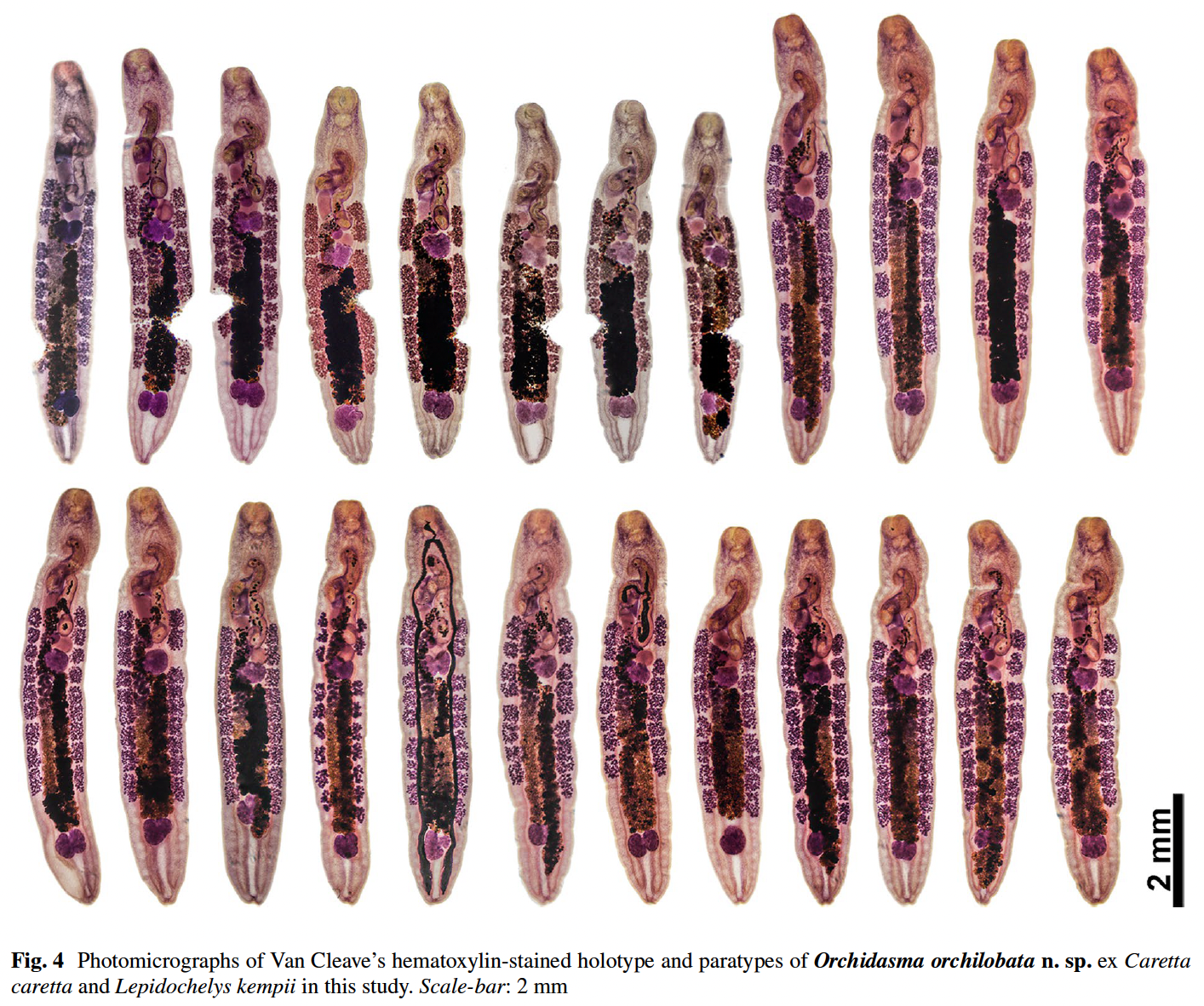
Authors: Thomas G. Rosser, Aiden Meaux, Ethan T. Woodyard, Justin M. Stilwell, Bradley M. Richardson, Logan R. S. Robison, Jill B. Hudnall, Kaylin McNulty, Jonah A. Nguyen, Divya Rose, Debra Moore, Beth Peterman, Stephen R. Reichley, and Mark L. Lawrence.
Abstract
Adult flukes of the genus Orchidasma were collected from the intestinal tracts of loggerhead Caretta caretta and Kemp’s ridley Lepidochelys kempii sea turtles as part of diagnostic investigations into sea turtle strandings. Two morphologically distinct species were present: one represented the type-species Orchidasma amphiorchis and an undescribed species. Orchidasma amphiorchis is redescribed and Orchidasma orchilobata n. sp. is described based on morphological, molecular and phylogenetic analyses. Oxford Nanopore Technology and Illumina sequencing were used to generate complete mitochondrial genomes and nuclear ribosomal operons for both species. Sanger sequencing from additional hologenophore specimens for both species were used to assess interspecific and intraspecific variability. Single locus phylogenetic analyses of aligned partial 28S rRNA gene sequences and concatenation of mitochondrial genes of the two species and other trematodes were performed to assess the taxonomic affinity of Orchidasma. Analysis of partial 28S rRNA gene sequences placed O. amphiorchis and O. orchilobata n. sp. as members of the Monorchioidea and closest to Skrjabinopsolus nudidorsalis, a member of Deropristidae. This disagreed with previous inclusion of Orchidasma as a member of Telorchiidae within Plagiorchioidea. Whole mitochondrial genome sequencing and phylogenetic analysis resulted in similar topology, suggesting a revision to include Orchidasma as a member of Deropristidae supported by shared morphological characters and nucleotide sequence data with deropristid congeners.
Read the full publication at https://doi.org/10.1007/s11230-025-10243-x.